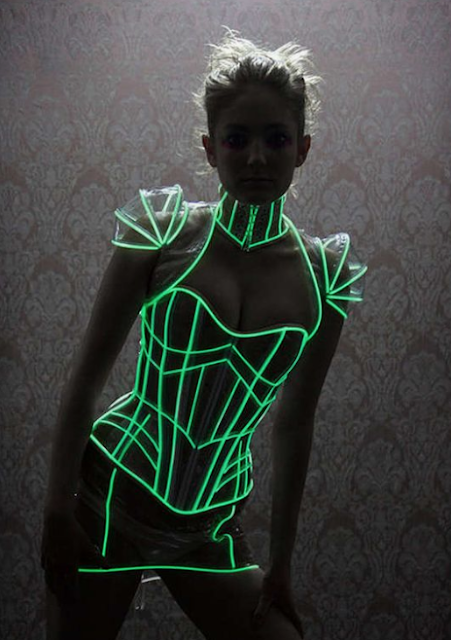The bandage dress - inspired by Gaultier's underwear as outwear collection.
Korben Dallas and the Flight attendants - Besson said there is always an overriding colour to his films, The Fifth Element's being orange (Korben's vests, Leelou's hair).
Like the flight attendants, this women's costume is an over sexualised interpretation of the restriction uniforms that often women have to wear. The Mcdonalds lady only appears for a few seconds of the movie- showing the attention to detail.
Zorg’s first outfit is a classic play on villain attire – a long pinstripe jacket over a matching waistcoat and trousers that are tucked into calf-length boots. The waistcoat is worn over an iridescent green shirt with a high curved collar that accentuates the transparent plastic head plate (its function is never explained). In a nod to futurism, the suit is made from rubber and the jacket has a vibrant red lining, highlighting his barely-concealed manic persona. For Zorg’s second look, Gaultier replaced the pinstripe waistcoat with an orange and green ombre version – the fabric looks very hi-tech but is less intimidating that the classic stripes. In fact, it’s whilst wearing this outfit that the audience is made aware of his weaknesses, which invariably affects his ‘villain’ status. This shiny outfit set Zorg apart from all the other characters, he is literally fighting for a different ending, and his style serves as a constant visual reminder. Zorg’s colour palette is picked up by other ‘bad’ characters – see the perspex mini skirt that one of the shape-shifting Mangalores wears at the airport. - https://girlsdofilm.wordpress.com/2014/06/08/gaultier-and-the-fifth-element/
Multipass - could be an interesting thing to have in my costumes pocket, a pass that allows us to time travel?


























